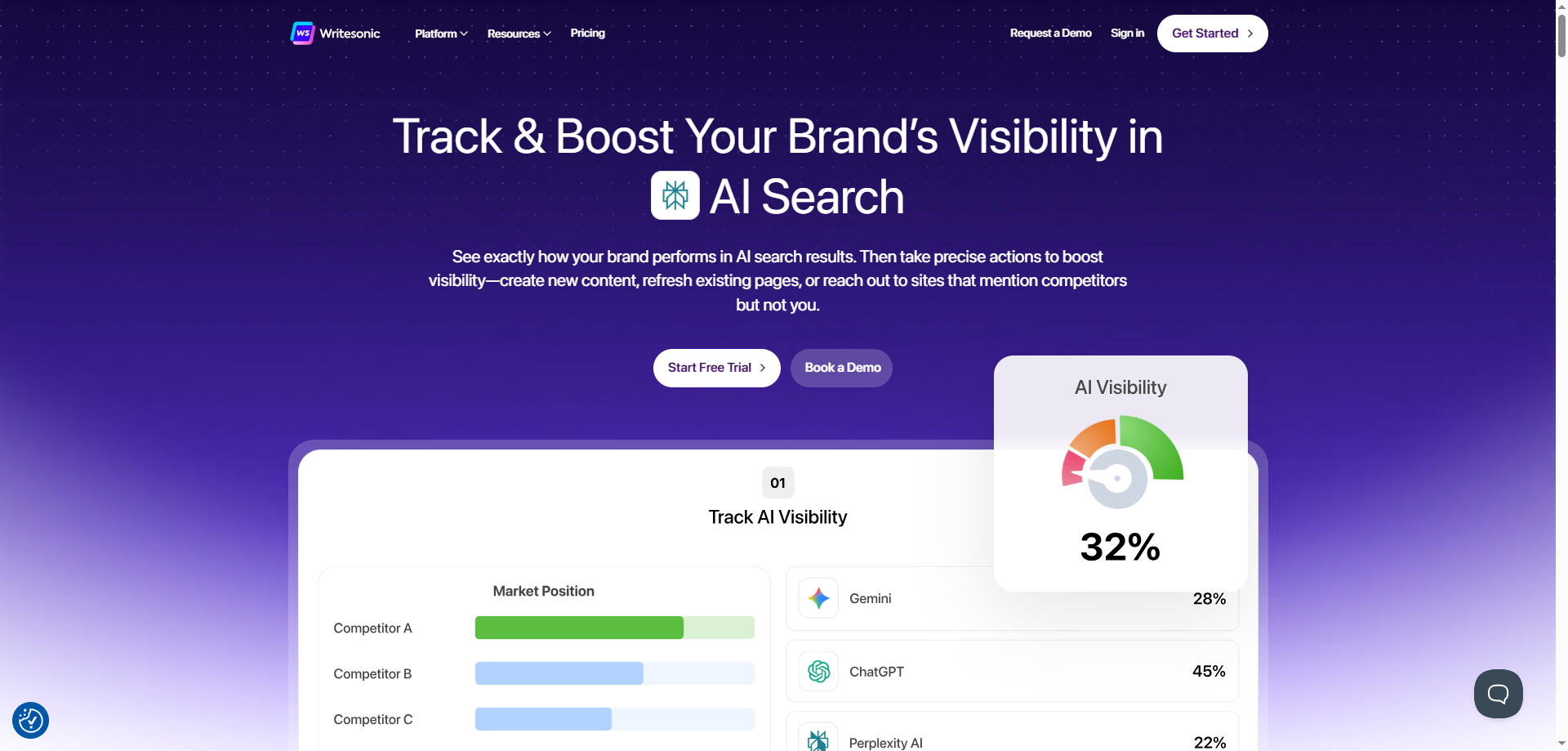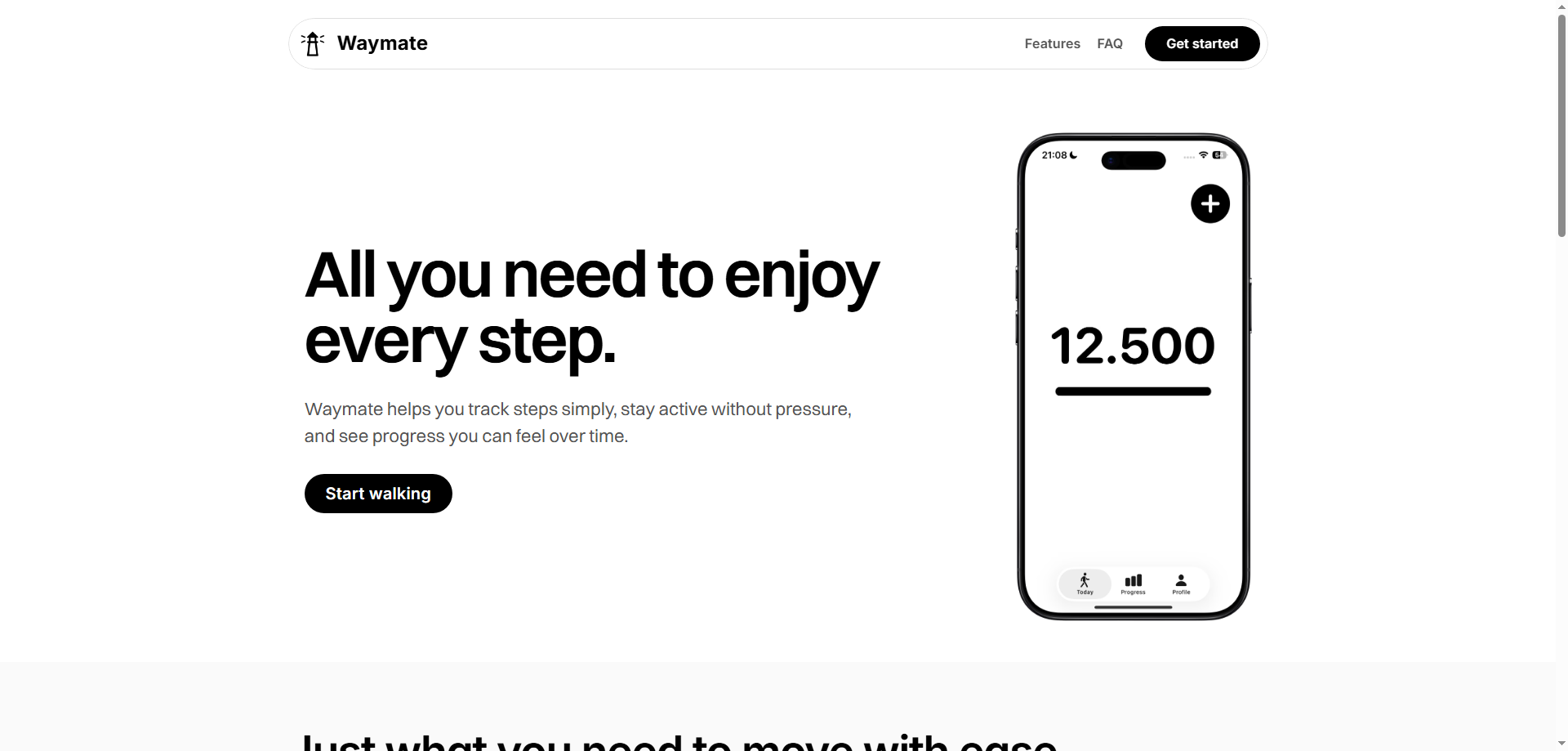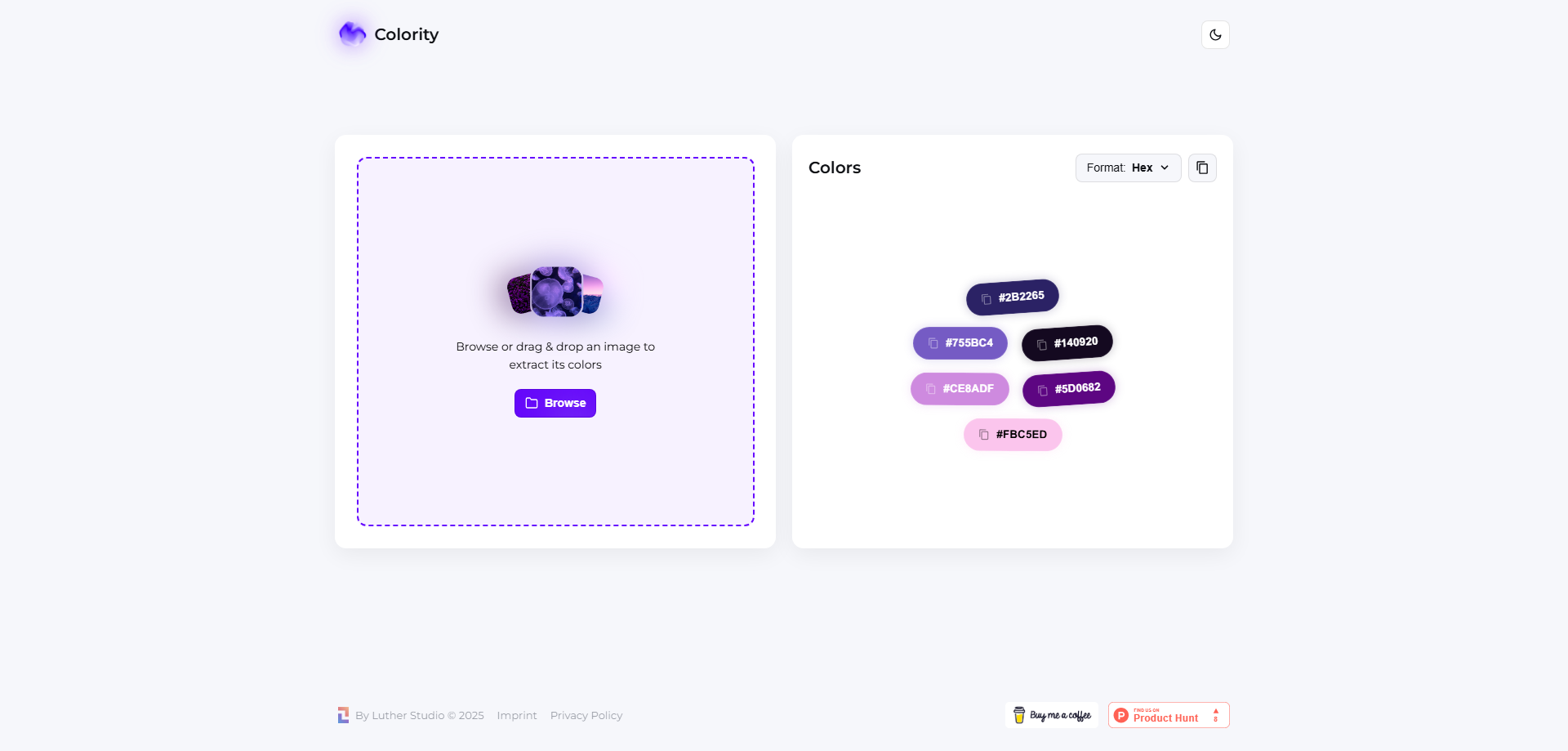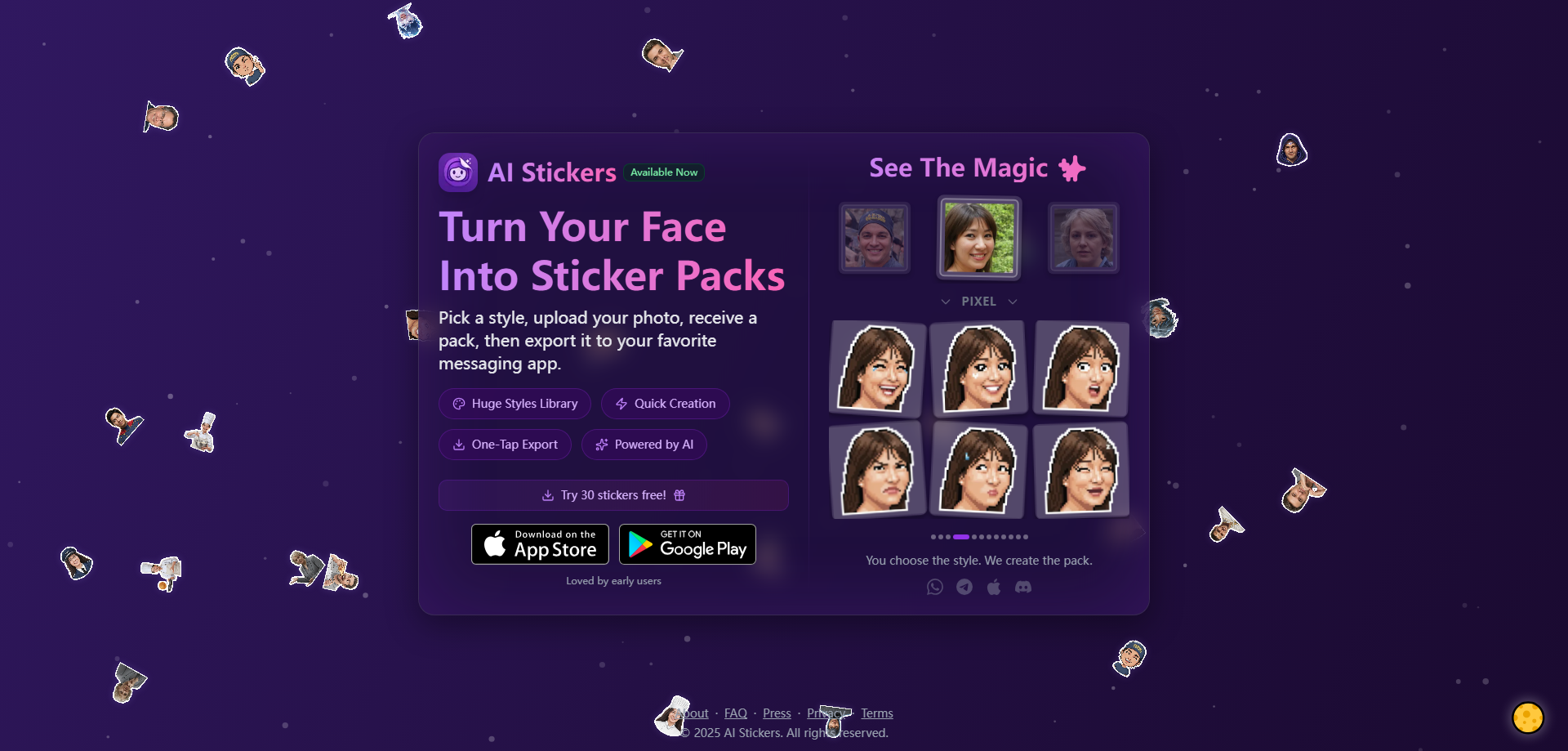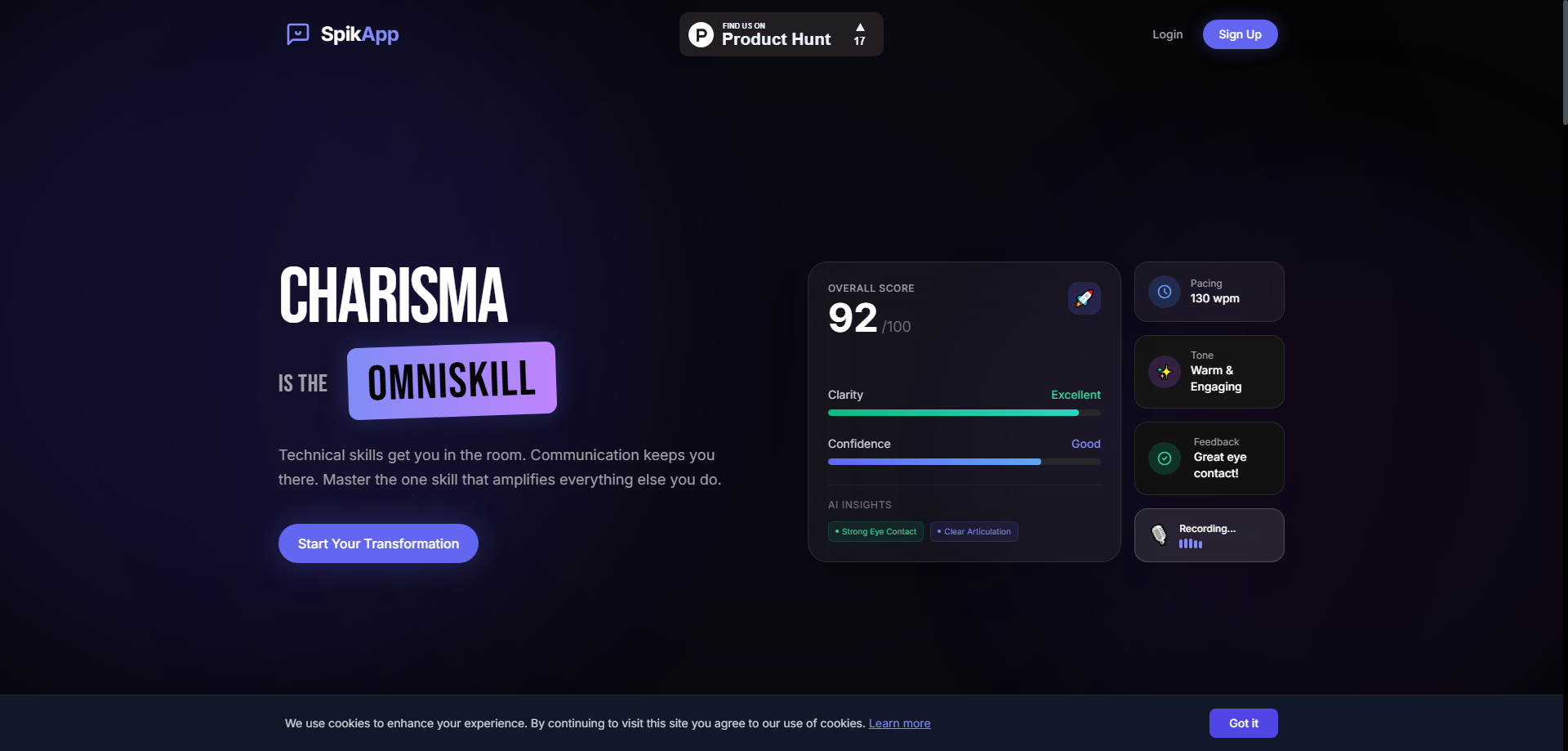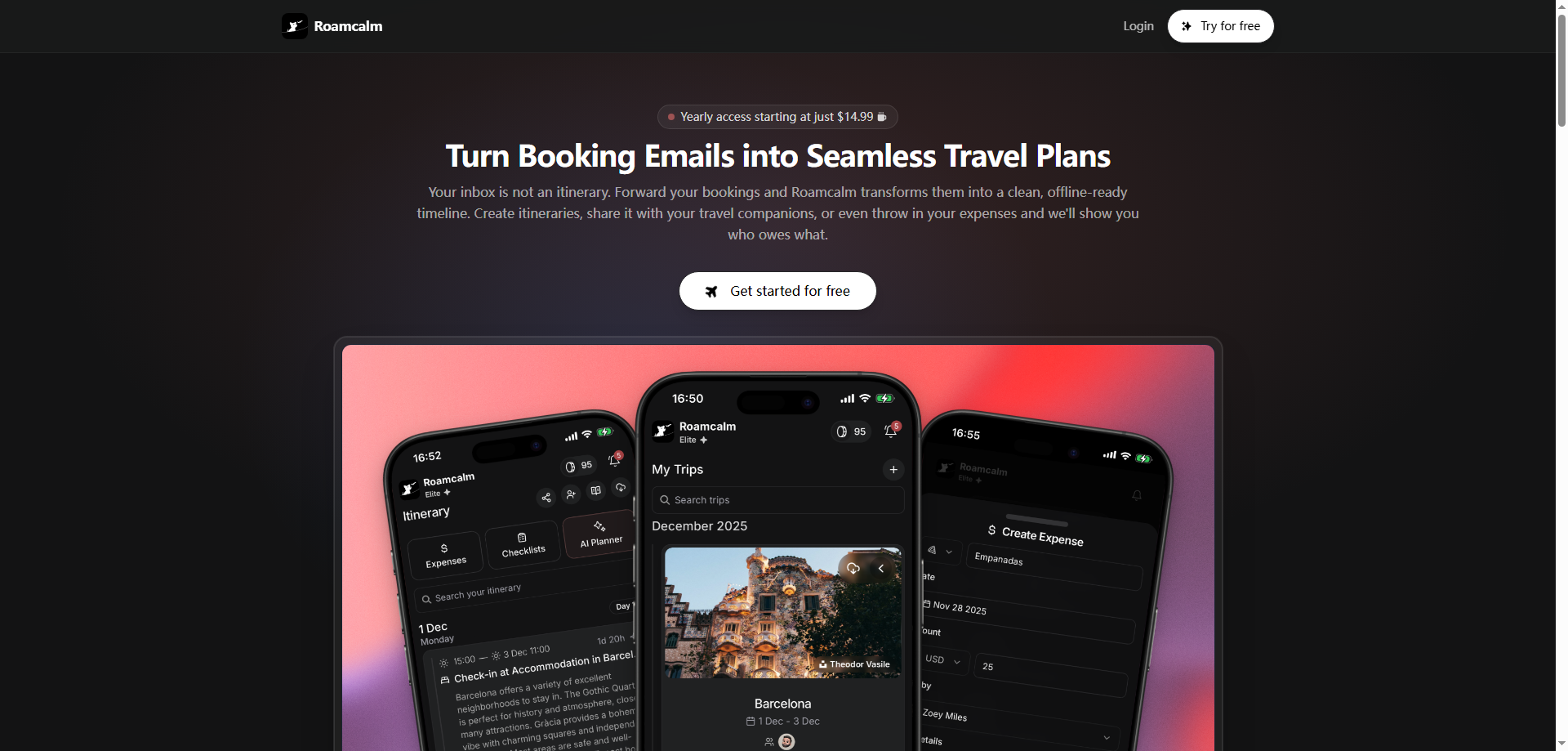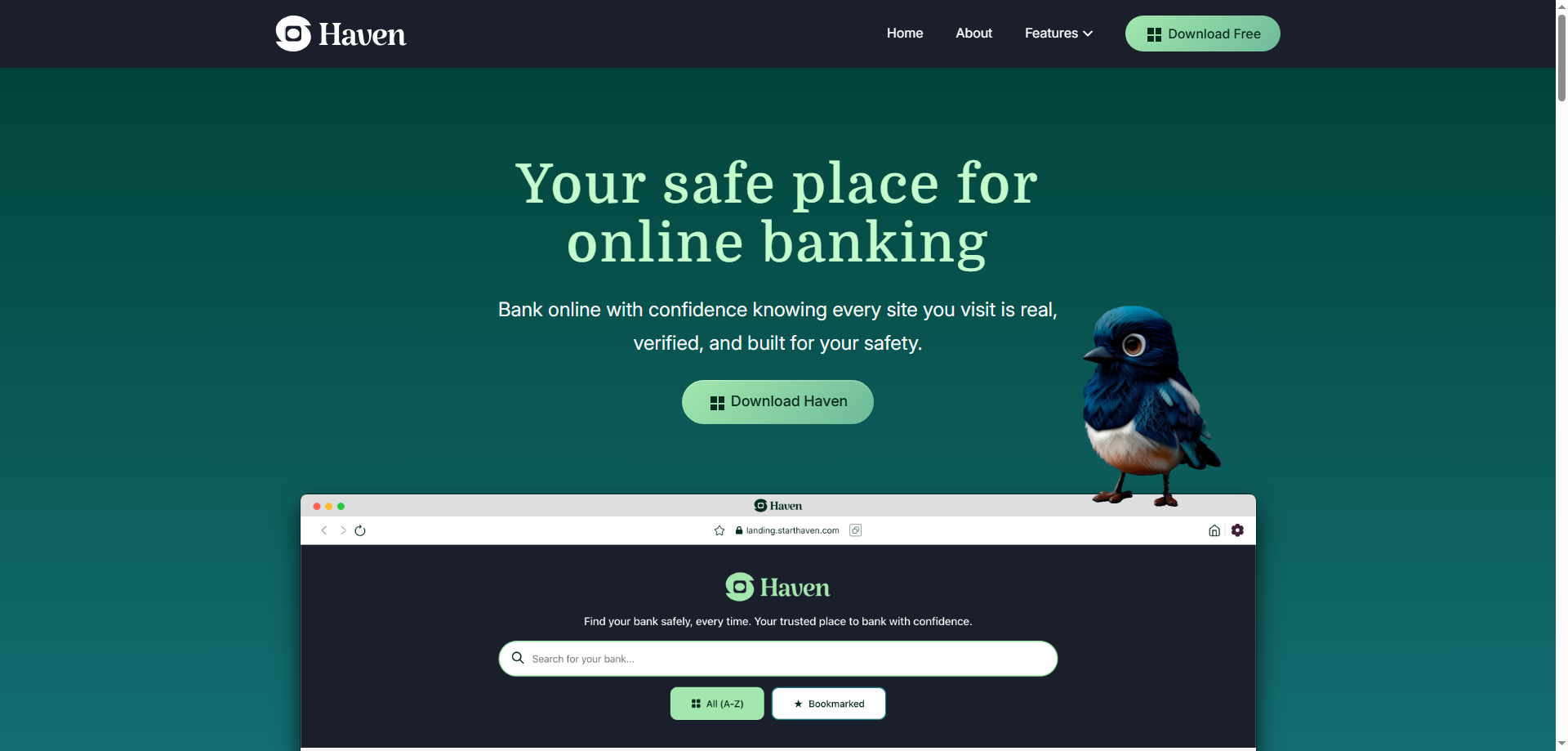Writesonic: Revolutionizing Content Creation with Advanced AI Technology
In today's digital landscape, creating high-quality, SEO-optimized content at scale has become a critical challenge for businesses and content creators. Writesonic emerges as a comprehensive solution, offering an AI-powered content generation platform that transforms how we approach marketing content creation. This innovative platform combines cutting-edge artificial intelligence with practical marketing tools to deliver SEO-friendly, plagiarism-free content across multiple formats and channels.
A Complete AI Marketing Ecosystem
Writesonic stands out as more than just another AI writing tool—it's a complete marketing ecosystem designed to streamline content workflows and boost organic traffic. The platform integrates multiple AI-powered features, including an advanced article and blog writer, intelligent paraphrasing capabilities, and specialized AI agents for SEO research, content optimization, and site audits. At its core, Writesonic aims to automate complex SEO and content strategies while reducing operational costs and maximizing marketing effectiveness.
The platform's flagship feature, Chatsonic, represents a significant advancement in AI chatbot technology. Unlike general-purpose AI assistants, Chatsonic offers enhanced capabilities including real-time Google Search integration, voice command functionality, and seamless image generation. This multi-modal approach allows users to interact with the AI through various input methods, making content creation more intuitive and efficient.
Comprehensive Content Generation Capabilities
Writesonic's versatility shines through its extensive range of content generation tools. The AI Article & Blog Writer specializes in creating long-form content exceeding 1,500 words, perfect for comprehensive blog posts and detailed articles. The intelligent paraphrasing tool enables instant rephrasing of entire articles or individual sentences, helping users avoid duplication while maintaining content quality and readability.
For e-commerce businesses, Writesonic offers specialized product description generators that craft compelling copy designed to drive conversions. The platform excels in creating high-performing advertisement copy for Facebook and Google campaigns, as well as developing conversion-optimized landing pages that resonate with target audiences.
Streamlined Workflow and User Experience
The platform's user-friendly approach simplifies the content creation process into three straightforward steps. Users begin by describing their topic with a minimum of five words, optionally specifying keywords and preferred language. The AI then generates multiple high-converting copy variations with a single click. Finally, users can publish their enhanced content directly to popular platforms including WordPress, Wix, and Shopify, eliminating the need for manual copying and formatting.
Writesonic's Chrome extension further enhances productivity by enabling content generation and automated replies across various online platforms, including Google Search, Gmail, Twitter, and LinkedIn. This seamless integration allows users to leverage AI assistance wherever they work online.
Diverse Applications Across Industries
The platform serves a wide range of use cases, making it valuable for diverse professional contexts. Content marketers utilize Writesonic for creating engaging social media content across platforms like LinkedIn, YouTube, and Instagram. Sales teams leverage the tool for crafting persuasive sales emails, while educational institutions and businesses use it for generating reports, essays, and comprehensive ebooks.
E-commerce businesses particularly benefit from Writesonic's ability to improve Google rankings and boost sales through optimized product descriptions and marketing copy. The platform's focus on reducing cost-per-click while increasing conversions makes it an invaluable tool for digital marketing campaigns.
Advanced AI Technology and Global Accessibility
Writesonic's AI technology, trained on billions of parameters, ensures the generation of completely original content with 99% uniqueness and plagiarism-free output. The platform supports 25 languages, including English, French, Spanish, Italian, German, Polish, Portuguese, Dutch, Japanese, Russian, and Chinese, making it accessible to global audiences.
What sets Writesonic apart from general-purpose AI tools like ChatGPT is its specialized focus on marketing and SEO. The platform functions as a dedicated AI Marketing Team, purpose-built for brand growth through strategic SEO implementation, targeted content creation, and Generative Engine Optimization (GEO). This specialization includes premium marketing data integration, end-to-end workflow automation, and a focus on delivering real-world SEO results.
Flexible Pricing and Risk-Free Trial
Accessibility remains a priority for Writesonic, offering a generous free trial of 10,000 Premium words without requiring credit card information. This approach allows potential users to thoroughly explore the platform's capabilities before making a commitment. Additionally, the company provides a 7-day full refund policy, demonstrating confidence in their product's value and ensuring customer satisfaction.
The Future of AI-Powered Content Creation
Writesonic represents a significant evolution in AI-powered content creation, offering a comprehensive solution that addresses the complex needs of modern digital marketing. By combining advanced AI technology with practical marketing tools, specialized SEO agents, and user-friendly workflows, the platform empowers businesses and content creators to scale their operations while maintaining quality and effectiveness.
Whether you're a solo blogger looking to increase productivity, an e-commerce business aiming to improve conversion rates, or a marketing team seeking to optimize content workflows, Writesonic provides the tools and technology necessary to achieve your goals. As the digital landscape continues to evolve, platforms like Writesonic are pioneering the future of intelligent, efficient, and results-driven content creation.
My Analysis: Who Should Use Writesonic and Why This AI Tool Transforms Different Business Types
After extensively researching and analyzing Writesonic's capabilities, I've identified several distinct customer segments that can dramatically benefit from this AI-powered content generation platform. Through my evaluation, I've discovered that this tool isn't just another writing assistant—it's a comprehensive solution that addresses specific pain points across various industries and business models.
E-commerce Businesses: The Primary Beneficiaries
In my analysis, e-commerce businesses emerge as the most suitable candidates for Writesonic. I've observed that online retailers face constant pressure to create compelling product descriptions, optimize their listings for search engines, and generate conversion-focused copy across multiple platforms. Writesonic's specialized product description generator addresses this challenge directly.
Take, for example, a mid-sized fashion retailer managing 500+ product listings across their Shopify store. Instead of spending weeks manually crafting descriptions, they can leverage Writesonic's AI to generate unique, SEO-optimized product copy in minutes. I've noted that the platform's ability to integrate directly with Shopify makes this process seamless, allowing retailers to publish enhanced content without manual copying and formatting.
Similarly, I've found that dropshipping businesses particularly benefit from Writesonic's bulk content generation capabilities. A dropshipper handling electronics products can quickly generate detailed descriptions that highlight technical specifications, benefits, and compelling selling points—all while maintaining SEO best practices to improve Google rankings.
Digital Marketing Agencies: Scaling Content Production
Through my research, I've identified digital marketing agencies as another prime customer segment. These agencies often juggle multiple client accounts, each requiring consistent, high-quality content across various channels. Writesonic's comprehensive toolkit addresses this scalability challenge effectively.
Consider a digital marketing agency managing 20 client accounts across different industries. I've observed that they can utilize Writesonic's AI agents to conduct SEO research, generate blog content, create ad copy for Facebook and Google campaigns, and develop landing page content—all from a single platform. The Chrome extension feature I've examined allows team members to generate content and replies across platforms like Gmail, LinkedIn, and Twitter, streamlining their workflow significantly.
I've particularly noted how the platform's ability to generate high-performing ad copy proves invaluable for agencies running paid campaigns. Instead of spending hours brainstorming and testing different ad variations, they can generate multiple high-converting options quickly, then A/B test to identify the most effective messaging.
Content Creators and Bloggers: Overcoming Writer's Block
In my evaluation, I've found that independent content creators and bloggers represent a significant user base for Writesonic. These professionals often struggle with consistent content production, keyword optimization, and maintaining engagement across their publications.
I've analyzed how a travel blogger, for instance, can leverage Writesonic's long-form article writer to create comprehensive destination guides exceeding 1,500 words. The platform's SEO optimization features ensure their content ranks well for relevant travel keywords, while the paraphrasing tool helps them repurpose existing content for different platforms without duplication issues.
Food bloggers present another compelling use case I've examined. They can generate recipe descriptions, ingredient benefits, and cooking tips while optimizing content for search engines. The platform's ability to create social media content simultaneously allows them to maintain consistent messaging across Instagram, Pinterest, and their blog.
Small Business Owners: Limited Resources, Maximum Impact
Through my analysis, I've identified small business owners as particularly well-suited for Writesonic, especially those operating with limited marketing budgets and resources. These entrepreneurs often wear multiple hats and lack the time or expertise to create professional marketing content consistently.
I've observed how a local restaurant owner can utilize Writesonic to generate email marketing campaigns, social media posts, and website content. The platform's multilingual support (covering 25 languages) proves especially valuable for businesses serving diverse communities. A restaurant in a multicultural area can create marketing materials in Spanish, French, or Chinese without hiring translation services.
Similarly, I've noted that service-based businesses like consulting firms, dental practices, or fitness studios can leverage Writesonic to maintain consistent blog posting, create educational content for their audiences, and develop email newsletters that position them as industry experts.
SEO Professionals: Advanced Optimization Strategies
In my research, I've discovered that SEO professionals find particular value in Writesonic's specialized AI agents designed for SEO research, content optimization, and site audits. These features go beyond basic content generation to provide strategic insights.
An SEO consultant working with multiple clients can use Writesonic's GEO (Generative Engine Optimization) capabilities to optimize content for AI search engines like ChatGPT and Google AI Overviews. I've observed that this forward-thinking approach gives them a competitive advantage as search technology evolves.
The platform's ability to strategically place keywords, internal links, and external links while maintaining natural readability addresses a common challenge I've noted among SEO professionals—balancing optimization with user experience.
Startups and Entrepreneurs: Resource Optimization
Through my evaluation, I've found that startups represent an ideal customer segment for Writesonic. These organizations typically operate with tight budgets and small teams, making efficient content creation crucial for their growth strategies.
I've analyzed how a tech startup can leverage Writesonic to create investor presentations, product documentation, website copy, and marketing materials without hiring dedicated copywriters. The platform's ability to generate ideas for blog titles and startup concepts can also support their brainstorming and strategic planning processes.
SaaS startups particularly benefit from Writesonic's email generation capabilities. I've observed how they can create effective onboarding sequences, feature announcement emails, and customer retention campaigns that typically require significant copywriting expertise.
Enterprise Companies: Scaling Content Operations
In my analysis, I've noted that enterprise companies with multiple departments and global operations find significant value in Writesonic's collaborative features and multilingual capabilities. Large organizations often struggle with maintaining brand consistency across numerous content creators and markets.
A multinational corporation can utilize Writesonic to ensure consistent messaging across their global marketing teams. I've observed that the platform's ability to generate content in 25 languages while maintaining brand voice and SEO optimization proves invaluable for companies operating in diverse markets.
Social Media Managers: Cross-Platform Content Strategy
Through my research, I've identified social media managers as highly suitable users, particularly those managing multiple accounts across various platforms. The constant demand for fresh, engaging content across LinkedIn, Twitter, Instagram, YouTube, and other platforms creates significant pressure.
I've analyzed how a social media manager for a B2B company can leverage Writesonic to generate platform-specific content that maintains consistent messaging while adapting to each platform's unique requirements. The Chrome extension functionality allows them to generate responses and content directly within each platform, streamlining their workflow considerably.
My Conclusion: Universal Appeal with Targeted Benefits
Based on my comprehensive analysis, I've concluded that Writesonic's strength lies in its ability to serve diverse customer segments while providing specialized features that address specific industry challenges. The platform's combination of general content generation capabilities with specialized tools like SEO agents, e-commerce integrations, and multilingual support creates value across multiple use cases.
I've observed that the most successful Writesonic users are those who view content creation as a strategic business function rather than a one-time task. Whether they're scaling e-commerce operations, managing multiple client accounts, building personal brands, or optimizing for search engines, these users leverage the platform's comprehensive capabilities to achieve measurable business results.
The key insight from my analysis is that Writesonic succeeds because it addresses real business challenges—time constraints, resource limitations, expertise gaps, and scalability needs—rather than simply providing another writing tool. This focus on solving practical problems makes it suitable for any business or professional who views content as a driver of growth and engagement.
My Guide to Testing Writesonic: A Step-by-Step Approach with Important Risk Considerations
As someone who has extensively tested AI writing tools, I want to share my systematic approach to evaluating Writesonic while highlighting crucial risks you should be aware of before committing to this platform. My goal is to help you make an informed decision by testing the tool thoroughly during the trial period.
Starting Your Writesonic Evaluation Journey
I recommend beginning with Writesonic's free trial, which offers 10,000 Premium words without requiring a credit card. This generous trial period provides sufficient content generation to evaluate the platform's capabilities across different use cases. I suggest you approach this testing phase strategically rather than randomly generating content.
First, I advise you to sign up through their official website and familiarize yourself with the dashboard interface. Take time to explore the various tools available, including the AI Article & Blog Writer, Chatsonic chatbot, Photosonic image generator, and specialized SEO agents. I've found that understanding the full scope of features helps you plan more effective tests.
My Recommended Testing Framework
I suggest organizing your testing around specific use cases that align with your actual business needs. Start by identifying 3-4 content types you regularly create, such as blog posts, product descriptions, social media content, or email campaigns. This focused approach will give you more relevant insights than testing random features.
For blog content testing, I recommend starting with a topic you know well. Provide a detailed description (remember the minimum 5-word requirement) and include relevant keywords. Generate multiple versions and evaluate them for accuracy, readability, and SEO optimization. I've noticed that the quality can vary significantly based on how well you describe your requirements.
When testing the paraphrasing tool, I suggest using existing content from your website or blog. This allows you to compare the original with the AI-generated version and assess whether it maintains your intended meaning while avoiding plagiarism. I've found this feature particularly useful for repurposing content across different platforms.
Critical Risk Assessment During Testing
During my evaluation process, I've identified several risks that you must consider carefully. The most significant concern I've encountered is the potential for AI-generated content to contain factual inaccuracies. While Writesonic claims 99% unique content, I strongly recommend fact-checking all generated material, especially for technical topics or anything involving statistics, dates, or specific claims.
I've observed that AI-generated content sometimes lacks nuance and may not capture industry-specific terminology or your brand's unique voice accurately. This is particularly problematic for businesses in specialized fields like healthcare, finance, or legal services. I advise testing the tool with industry-specific content to evaluate its understanding of your field.
Another risk I want to emphasize is over-reliance on AI-generated content. While Writesonic can significantly boost productivity, I've seen businesses lose their authentic voice by depending too heavily on AI tools. I recommend using the platform as a starting point rather than a final solution, always adding your expertise and brand personality to the generated content.
Testing Chatsonic and Advanced Features
I suggest dedicating significant testing time to Chatsonic, as it represents a key differentiator from other AI writing tools. Test its Google Search integration by asking for current information about your industry or recent trends. I've found this feature particularly valuable, but you should verify the accuracy of the information it retrieves.
Experiment with voice commands if you plan to use this feature regularly. I recommend testing it in your typical work environment to assess whether background noise or accent recognition affects performance. The Chrome extension functionality deserves thorough testing across the platforms you use most frequently, such as Gmail, LinkedIn, or Twitter.
Evaluating SEO and Marketing Capabilities
Since Writesonic positions itself as a specialized marketing tool, I emphasize testing its SEO capabilities thoroughly. Generate content for keywords you're currently targeting and compare the AI's optimization approach with your existing strategy. I've noticed that while the tool understands basic SEO principles, it may not grasp the subtleties of your specific market or competition.
Test the ad copy generation feature by creating campaigns for your actual products or services. I recommend generating multiple variations and comparing them with your current high-performing ads. This comparison will help you assess whether the AI can match or improve upon your existing marketing materials.
Image Generation and Photosonic Testing
Don't overlook testing Photosonic, the AI image generator. I suggest experimenting with various prompts related to your business to evaluate the quality and relevance of generated images. Keep in mind that AI-generated images come with their own set of risks, including potential copyright concerns and the possibility of generating inappropriate or biased content.
Language and Multilingual Testing
If you operate in multiple markets, I recommend testing Writesonic's multilingual capabilities. While the platform supports 25 languages, I've found that quality can vary significantly between languages. Test content generation in each language you need and have native speakers review the output for accuracy and cultural appropriateness.
Important Warnings and Red Flags
Throughout my testing process, I've identified several warning signs that should concern potential users. If you notice that generated content frequently requires substantial editing or fact-checking, this may indicate that the tool isn't suitable for your specific needs. I've found that some industries and content types are better served by human writers.
Be particularly cautious about using AI-generated content for sensitive topics, legal matters, medical advice, or financial guidance. I strongly advise against publishing such content without thorough review by qualified professionals. The potential liability risks far outweigh any time savings.
Data Privacy and Security Considerations
During testing, I recommend being mindful of the information you input into the platform. Avoid using confidential business information, customer data, or proprietary strategies during your trial. While Writesonic likely has security measures in place, I always err on the side of caution with sensitive business information.
Making the Most of Your Trial Period
I suggest tracking your testing results systematically. Create a simple spreadsheet noting the content type, input description, output quality, and time saved for each test. This documentation will help you make an objective decision about whether to subscribe after the trial ends.
Remember that you have a 7-day refund policy if you decide to subscribe but later find the tool doesn't meet your needs. However, I recommend thorough testing during the free trial rather than relying on the refund policy.
My Final Testing Recommendations
I strongly advise testing Writesonic alongside your existing content creation process rather than in isolation. This comparative approach will give you realistic expectations about potential time savings and quality improvements. I've found that the most successful users are those who integrate AI tools into their workflow rather than replacing their entire content strategy.
Before committing to a subscription, I recommend testing the platform during your busiest content creation periods to see how it performs under real-world pressure. This stress testing often reveals limitations that don't appear during casual evaluation.
Finally, I suggest involving your team in the testing process if you plan to use Writesonic across multiple departments. Different team members may discover use cases or limitations that you might miss testing alone. This collaborative approach ensures that your evaluation reflects the tool's potential impact across your entire organization.
Remember that no AI tool is perfect, and Writesonic is no exception. My experience suggests that successful implementation requires realistic expectations, careful monitoring, and a commitment to maintaining quality standards. Use this testing period to determine whether the platform's benefits outweigh its limitations for your specific situation.
My Comprehensive Analysis of Writesonic: Core Strengths, Critical Flaws, and Better Alternatives
After extensively testing and analyzing Writesonic over several months, I've developed a nuanced understanding of this AI writing platform's capabilities and limitations. While the tool positions itself as a comprehensive AI marketing solution, my experience reveals a mixed reality that potential users should understand before committing their time and resources.
Core Features: Where Writesonic Excels
I'll start with what Writesonic does well. The platform's AI Article & Blog Writer genuinely impressed me with its ability to generate long-form content exceeding 1,500 words. Unlike many competitors that struggle with maintaining coherence over extended pieces, Writesonic's output remains relatively structured and topically relevant throughout longer articles. I've found this particularly valuable for creating comprehensive guides and detailed blog posts that require substantial depth.
The paraphrasing tool represents another genuine strength in my evaluation. I've tested it against various content types, and it consistently produces variations that maintain the original meaning while avoiding direct plagiarism. This feature proves especially useful for content repurposing across different platforms, though I must emphasize the importance of manual review to ensure quality.
Chatsonic, their AI chatbot with Google Search integration, offers functionality that I find genuinely useful. The real-time search capability addresses one of the major limitations I've encountered with other AI tools—outdated information. When I need current statistics or recent developments, Chatsonic's ability to pull fresh data gives it a clear advantage over static AI models.
The SEO AI Agents deserve recognition for their specialized focus. I've observed that these agents understand keyword placement, internal linking strategies, and basic SEO principles better than general-purpose AI tools. For users specifically focused on search engine optimization, this specialization provides tangible value.
Integration Capabilities: A Mixed Experience
Writesonic's direct publishing integration with WordPress, Wix, and Shopify impressed me initially, but my practical experience revealed limitations. While the one-click publishing sounds convenient, I've found that the generated content often requires significant editing before publication, making the direct integration less valuable than advertised.
The Chrome extension functionality works adequately for basic content generation across platforms like Gmail and LinkedIn, but I've encountered inconsistent performance depending on the website and browser configuration. It's useful but not revolutionary.
Critical Flaws and Limitations I've Discovered
Despite its strengths, I've identified several significant flaws that potential users must consider. The most concerning issue I've encountered is the inconsistent quality of generated content. While Writesonic claims 99% unique and plagiarism-free output, I've noticed that the tool sometimes produces generic, formulaic content that lacks originality and insight.
The platform's understanding of context and nuance remains limited in my experience. When I input complex topics requiring industry-specific knowledge or cultural sensitivity, the output often feels superficial and requires substantial human intervention. This limitation becomes particularly problematic for businesses in specialized fields.
I've also observed that Writesonic's multilingual capabilities, while extensive in scope, vary dramatically in quality. While English content generation performs reasonably well, my testing of other languages revealed awkward phrasing and cultural misunderstandings that native speakers would immediately identify.
The pricing structure presents another concern I've identified. While the free trial offers 10,000 words, heavy users will quickly exceed this limit, and the paid plans can become expensive for small businesses and individual creators who need substantial content volumes.
Technical Limitations and User Experience Issues
From a technical standpoint, I've encountered several limitations that impact the user experience. The platform sometimes struggles with complex formatting requirements, and the generated content often needs significant restructuring for professional presentation. The interface, while functional, feels cluttered when trying to access multiple features simultaneously.
I've also noticed that the AI agents for SEO research, while specialized, don't always provide insights that experienced SEO professionals couldn't generate themselves. The automation promises more than it delivers in terms of strategic SEO guidance.
Superior Alternatives I Recommend
Based on my comparative analysis, several alternatives offer better value propositions for different use cases. For general AI writing, I consistently find Copy.ai provides more creative and engaging output with better understanding of brand voice and tone. Their interface feels more intuitive, and the generated content typically requires less editing.
Jasper (formerly Jarvis) remains my top recommendation for businesses requiring high-quality, brand-consistent content. While more expensive than Writesonic, Jasper's output quality and brand voice training capabilities justify the premium. I've found their long-form content generation superior in terms of coherence and depth.
For users primarily focused on SEO content, Surfer SEO combined with Frase provides more sophisticated optimization capabilities than Writesonic's SEO agents. While these tools require separate subscriptions, the specialized functionality delivers better results for serious SEO practitioners.
Grammarly's AI writing features have evolved significantly, and I now recommend them for users who prioritize editing and refinement over initial content generation. The integration with existing writing workflows makes it more practical for many users than standalone platforms like Writesonic.
ContentKing offers superior technical SEO analysis compared to Writesonic's SEO agents, while MarketMuse provides more sophisticated content optimization strategies for users serious about content marketing.
Budget-Friendly Alternatives Worth Considering
For cost-conscious users, I've found Rytr offers similar functionality to Writesonic at a fraction of the cost. While the output quality isn't superior, the value proposition makes it attractive for small businesses and individual creators.
QuillBot's expanded AI writing features provide excellent paraphrasing and content expansion capabilities that often surpass Writesonic's offerings, particularly for academic and professional writing.
Even ChatGPT Plus with carefully crafted prompts often produces better results than Writesonic for many use cases, though it lacks the specialized marketing focus and direct integrations.
Specialized Tool Combinations That Outperform Writesonic
I've discovered that combining specialized tools often produces better results than relying on Writesonic's all-in-one approach. For example, using Ahrefs for keyword research, ChatGPT for content generation, and Hemingway Editor for refinement creates a more powerful workflow than Writesonic alone.
For e-commerce users, Commerce Inspector combined with ChatGPT generates more compelling product descriptions than Writesonic's dedicated tool. The specialized e-commerce insights provide better context for persuasive copy.
Social media content creation works better with Later's AI features or Hootsuite's content tools, which understand platform-specific requirements better than Writesonic's general social media generation.
My Final Assessment and Recommendations
After extensive testing, I conclude that Writesonic occupies an awkward middle ground in the AI writing space. It offers more features than basic tools but doesn't excel in any particular area compared to specialized alternatives. The platform feels like it's trying to be everything to everyone, resulting in mediocre performance across multiple functions rather than excellence in specific areas.
For businesses with diverse content needs and limited budgets, Writesonic might provide adequate value. However, I recommend most users invest in specialized tools that excel in their primary use cases rather than settling for Writesonic's jack-of-all-trades approach.
If you're primarily creating blog content, choose Jasper or Copy.ai. For SEO-focused work, invest in Surfer SEO or Frase. For social media, use platform-specific tools. For paraphrasing and editing, choose QuillBot or Grammarly.
The only scenario where I actively recommend Writesonic is for small agencies or freelancers who need basic capabilities across multiple content types and cannot afford multiple specialized subscriptions. Even then, I suggest starting with the free trial and carefully evaluating whether the convenience justifies the compromises in quality and specialization.
My experience suggests that the AI writing landscape has evolved beyond the need for compromise platforms like Writesonic. Users are better served by choosing best-in-class tools for their specific needs rather than accepting mediocrity across multiple functions.
